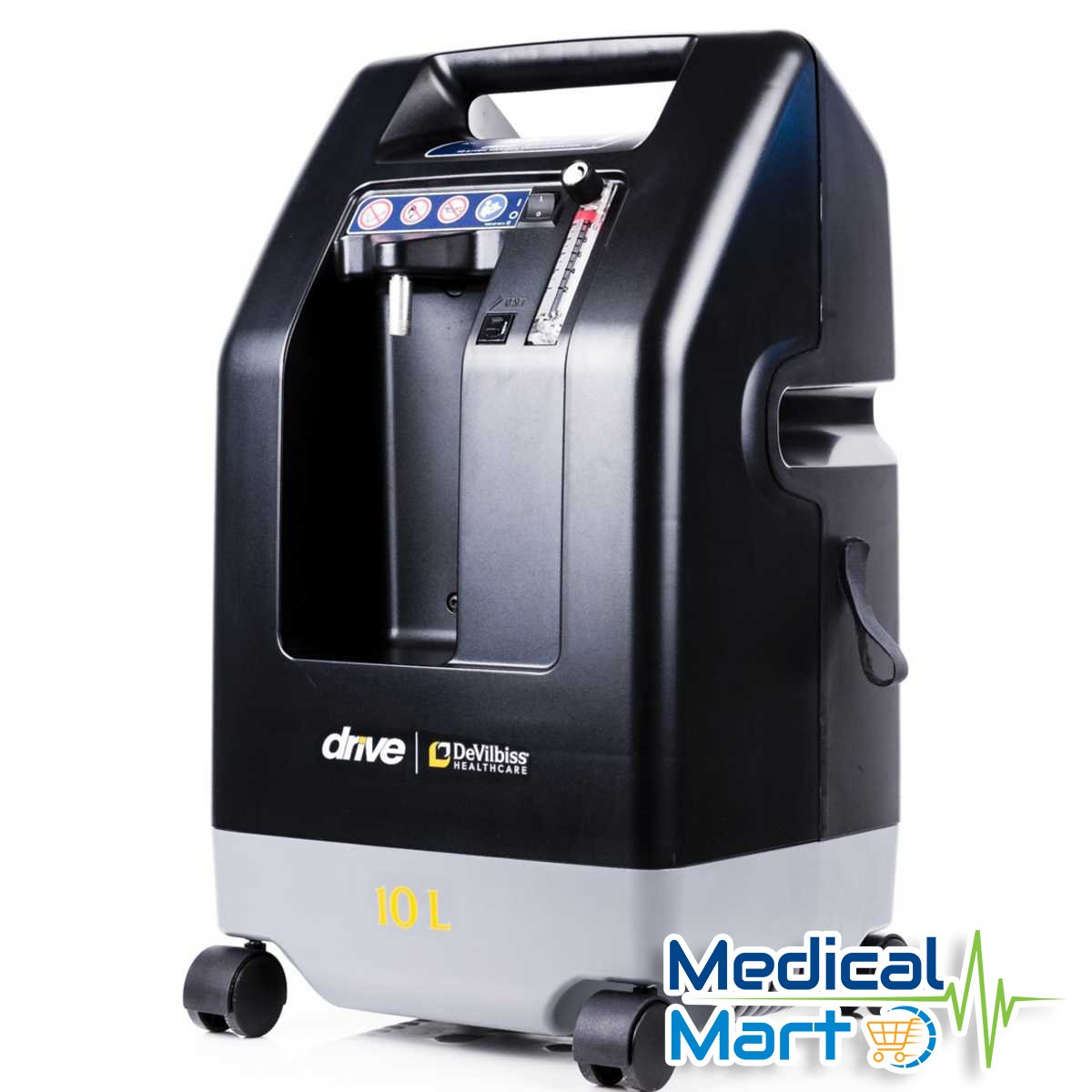- The 525 series and 1025 series concentrators utilize approximately 80% of the same components and service parts
- Outlet pressure of 20 psi
- Lightweight and compact - weighs only 42 lbs and equal in height, width and depth to the 525 concentrator
- Exclusive DeVilbiss OSD® (Oxygen Sensing Device), standard on every unit, monitors the oxygen produced and ensures patient safety and reliability for longer service intervals • Equipped with accessible patient controls, bright LEDs that can be seen from a distance, protected cannula fitting and recessed humidifier nook to prevent damage
- .Convenient top and side handles for easy transport
- Lockable flow meter
- Accommodates up to 50 ft of oxygen tubing plus 7 ft of cannula (15.3 m)
- Durable and reliable design
- Unit tested in high temperature and high humidity for extended periods of time
- Proven rotary valve design
- Maintains oxygen purity up to 5,000 ft
- Three-year provider service interval
- Auxiliary Oxygen Port
Selecting a Home Oxygen Concentrator for your medical needs should incorporate matching the oxygen requirements specified by your doctor to the capability of the oxygen machine. Prescriptions from medical doctors often specify a certain amount of oxygen the patient is required to remain healthy. These prescriptions often are written in terms of liters per minute of oxygen flow or LPM. If your prescription does not indicate a specified amount of oxygen in liters per minute, then a less expensive 5 Liter unit should be adequate for your needs. If however, your prescription calls for 8 or 10 LPM, then you should select between one of the larger units that have a greater capacity for oxygen production and flow.
Who needs Oxygen Therapy:
Chronic Obstructive Pulmonary Disease
Chronic Obstructive Pulmonary Disease (COPD) is a term used for conditions including chronic bronchitis and emphysema. COPD leads to long term damage of the airways in the lungs, causing them to become narrower and making it more difficult for air to get in and out.
Each lung is made up of tubes called Bronchi which branch into smaller airways known as Bronchioles. At the end of these smaller airways are tiny air sacs (Alveoli) which, on inhalation, expand and inflate. They work to transfer inhaled oxygen into the blood stream and remove waste gases through exhalation.
Emphysema
In Emphysema the tissue that surrounds the smaller airways is damaged and air is trapped in the alveoli. These air sacs become overstretched and unable to function correctly causing shortness of breath.
Chronic Bronchitis
Chronic Bronchitis is inflammation of the airways which deliver air to the lungs. This can lead to an increase in mucus production and consequent narrowing of the bronchi.
How is COPD diagnosed?
COPD is diagnosed by assessing a patient's lung function. Spirometry is used in the diagnosis of COPD and measures the maximum volume of air a person is capable of breathing out in one breath.
Primarily spirometry assists in determining the severity of the disease and the results may lead to the patient being referred for further lung function testing or X-ray.
What treatment is available?
COPD cannot be cured but there are a variety of treatments available to make the disease more manageable. Available COPD treatment includes pulmonary rehabilitation, bronchodilator medication, nebulizers and, in more advanced cases, Long Term Oxygen Therapy (LTOT). Smoking cessation is also actively encouraged as this will help to improve the symptoms of COPD.
Shortness of breath can make daily activities more difficult for sufferers of COPD, however remaining active is an important part of managing the condition. Pulmonary rehabilitation is carried out by professional respiratory physiotherapists or nurses, promotes exercise and helps sufferers to better manage their symptoms. Whilst it is not possible to reverse lung damage, pulmonary rehabilitation can benefit general fitness and the ability to cope better with periods of breathlessness.
COPD sufferers are also often prescribed bronchodilator medicines, which act to relax the bronchial muscles and open up the airways making it easier to breathe. A nebuliser is a device which transforms liquid medication into a fine mist for the patient to inhale via a mouthpiece or mask. A nebuliser may be recommended for administering bronchodilator drugs as the medication is deposited deep into the lungs where needed.
Long Term Oxygen Therapy (LTOT) is used for patients in the more advanced stages of the disease who suffer with low oxygen levels in the blood. In adults the use of oxygen is usually recommended for at least 15 hours per day and it is common for patients to use oxygen overnight and for several hours during the day.
The most common modes of LTOT are an oxygen concentrator, a liquid oxygen reservoir or large cylinders (although these are becoming rarer). For patients that require oxygen when exercising or when away from home there are ambulatory or portable oxygen systems available including portable oxygen concentrators, portable liquid systems and portable cylinders with oxygen conserving devices.



